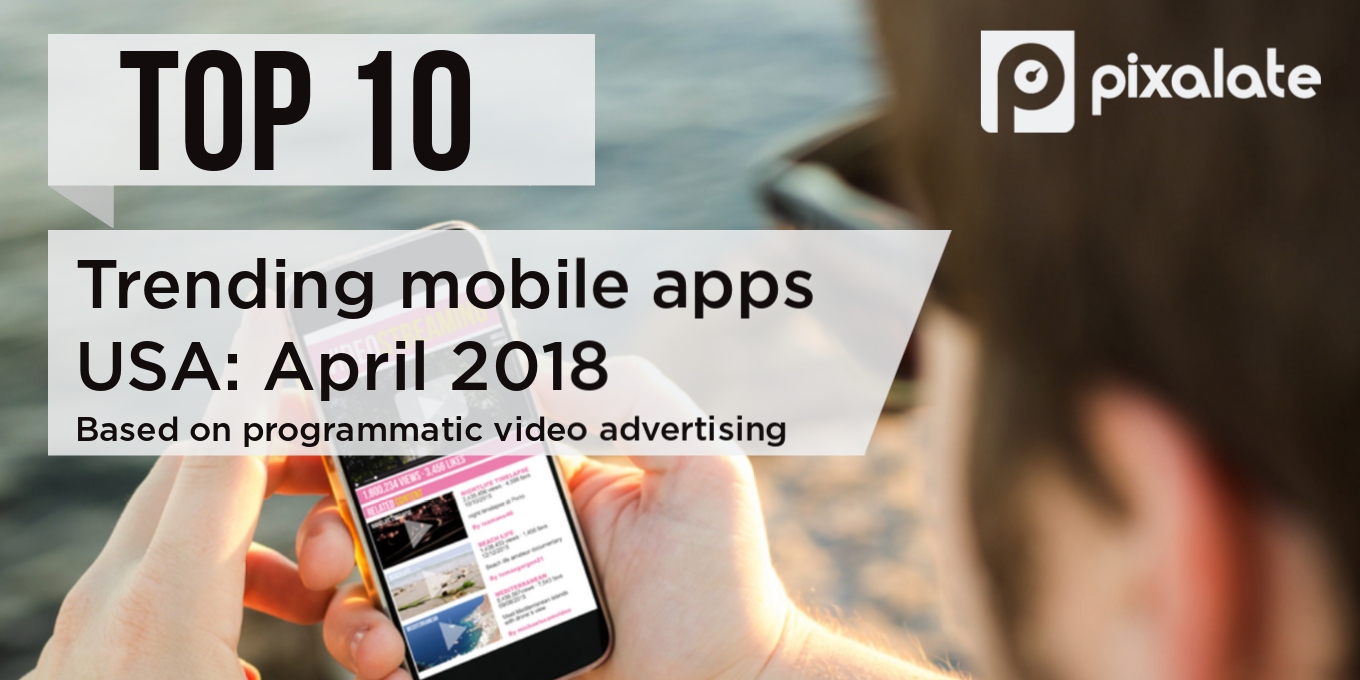
Pixalate recently released the top "trending" mobile apps from April 2018 in the United States based on display advertising. These lists highlight the top apps in terms of raw programmatic ad volume; they don’t necessarily represent the “best” apps in terms of brand safety, user engagement, or even reach.
The Share of Voice rankings do, however, drive home the fundamental fact that the mobile app world is still opaque, and that perception can be quite different from reality when it comes to the apps you think are most popular versus those that receive the most (programmatic) advertising. Knowing where the majority of programmatic ads are delivered across apps and devices is one step in clarifying the app advertising ecosystem and smarter inventory selection.
Below you’ll find the individual lists of the top 10 trending apps for both iOS and Android smartphones and tablets based on programmatic video ad volume. You can download the full list of top 30 apps here:
According to Pixalate’s data, The Weather Channel: Forecast was the top trending app for programmatic video advertising on iOS smartphones last month.
According to Pixalate’s data, Magic Jigsaw Puzzle was the top trending app for programmatic video advertising on iOS tablets last month.
According to Pixalate’s data, Sudoku was the top trending app for programmatic video advertising on Android smartphones last month, closely followed by Word Connect.
According to Pixalate’s data, Word Connect was the top trending apps for programmatic video advertising on Android tablets in April 2018.
While many of the apps found on these top 10 lists are not surprising, there are several that are not well known. Of course, an app doesn’t need to be widely known to be worth advertising on, but when apps are among the top apps in terms of advertising volume — but perhaps not a household name — it’s worth investigating.
Perhaps the apps are overloading their pages with ads, which creates a bad user experience. (Some of the above apps are guilty of this.) Perhaps the apps generate a lot of available inventory but don’t delivery high viewability rates (some of the above apps are guilty of this, too).
Ultimately, brands need to look at where the majority of their mobile app advertisements are going and determine whether or not those are the apps they really want to be seen on. Are the apps brand safe for your goals? Do you know what the user experience is like on the apps you are advertising on the most?
The above apps show the top apps in terms of raw programmatic display ad volume, so we know advertisers are active in these applications. But for several of these apps — and to be clear, not all — the end user experience is lacking, which suggests that advertisers still need to take a closer look at where their mobile app ad spend is truly going.
Pixalate examined mobile in-app video advertisements sold via programmatic channels throughout April 2018 for this study. The data is based on activity within apps that engage in programmatic advertising in the open marketplace. Invalid Traffic (IVT) — including General Invalid Traffic (GIVT) and Sophisticated Invalid Traffic (SIVT) — were removed prior to ranking the apps. Each app's "Share of Voice" is determined based on programmatic video ad volume as measured by Pixalate. The data contained herein is based solely on Pixalate's Share of Voice analysis of programmatic advertising impressions in April 2018, and any reference to "top" or "trending" apps refers solely to an app's Share of Voice of programmatic advertising impressions.
Sign up for our blog to stay updated with new stats, trends, and analysis on digital ad fraud.
*By entering your email address and clicking Subscribe, you are agreeing to our Terms of Use and Privacy Policy.
These Stories on Mobile
*By entering your email address and clicking Subscribe, you are agreeing to our Terms of Use and Privacy Policy.

Disclaimer: The content of this page reflects Pixalate’s opinions with respect to the factors that Pixalate believes can be useful to the digital media industry. Any proprietary data shared is grounded in Pixalate’s proprietary technology and analytics, which Pixalate is continuously evaluating and updating. Any references to outside sources should not be construed as endorsements. Pixalate’s opinions are just that - opinion, not facts or guarantees.
Per the MRC, “'Fraud' is not intended to represent fraud as defined in various laws, statutes and ordinances or as conventionally used in U.S. Court or other legal proceedings, but rather a custom definition strictly for advertising measurement purposes. Also per the MRC, “‘Invalid Traffic’ is defined generally as traffic that does not meet certain ad serving quality or completeness criteria, or otherwise does not represent legitimate ad traffic that should be included in measurement counts. Among the reasons why ad traffic may be deemed invalid is it is a result of non-human traffic (spiders, bots, etc.), or activity designed to produce fraudulent traffic.”

